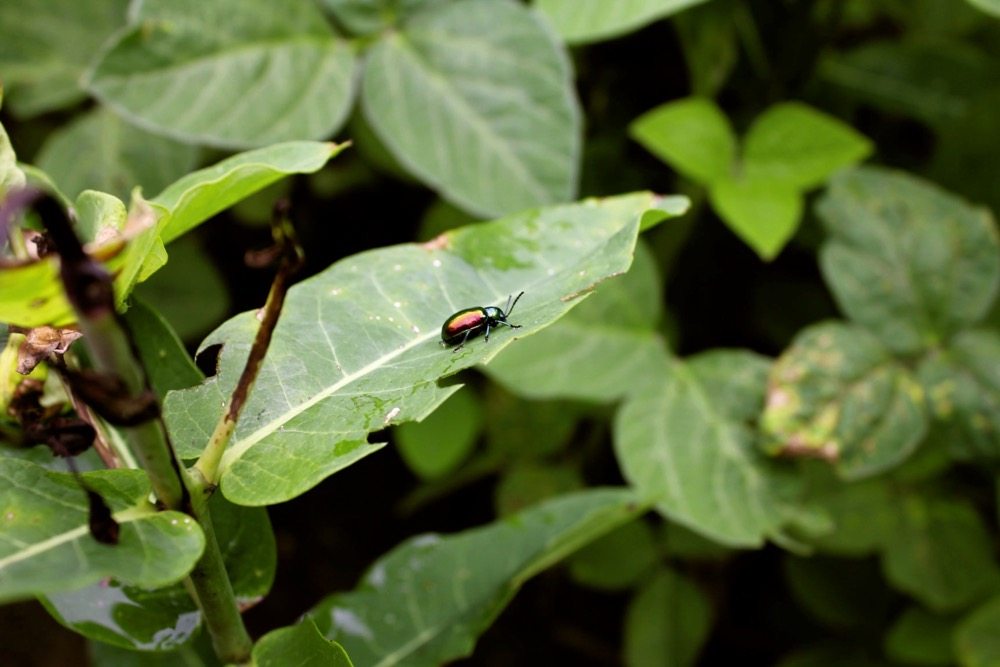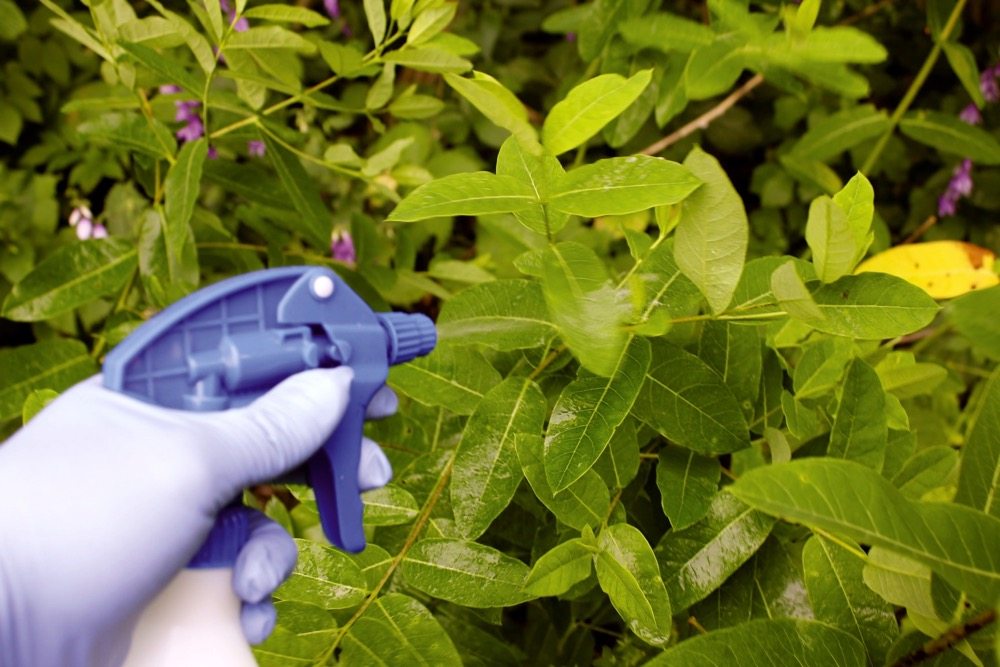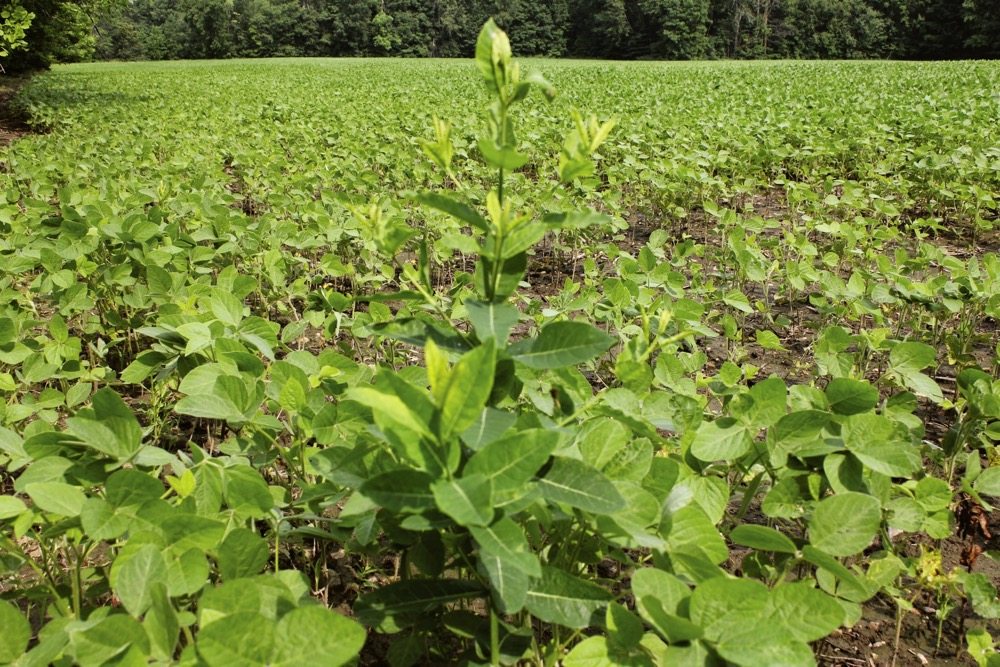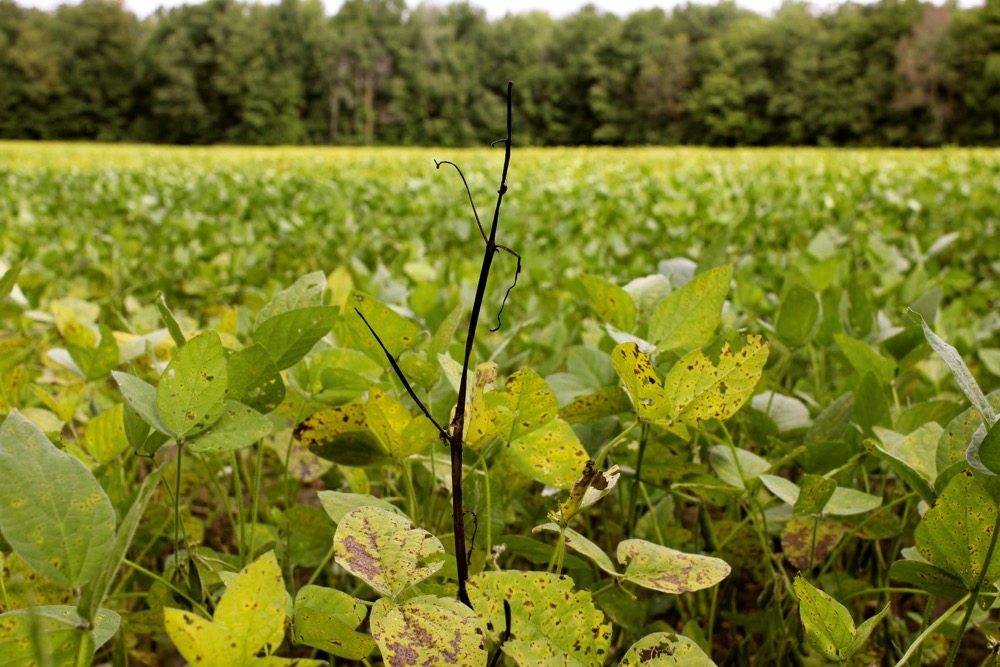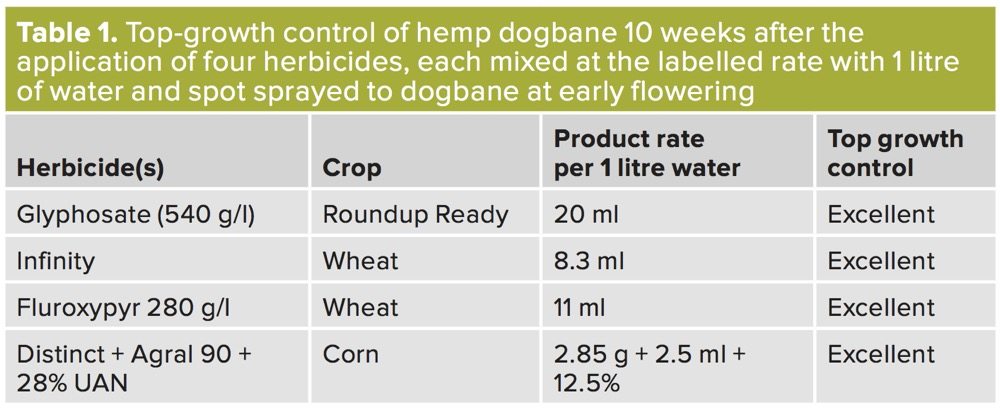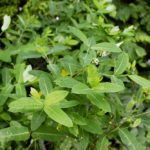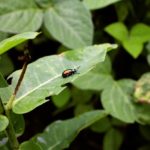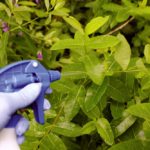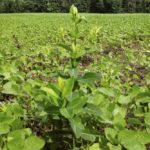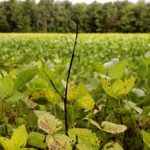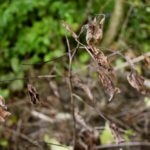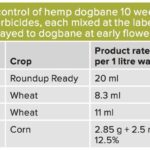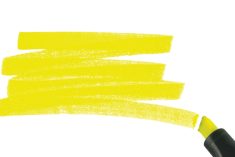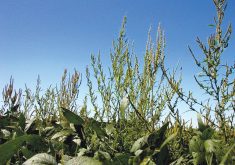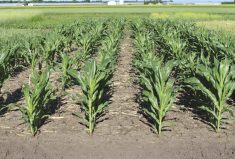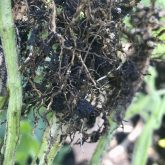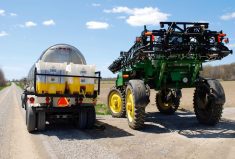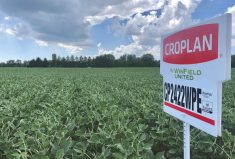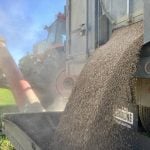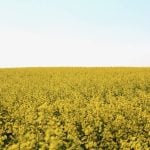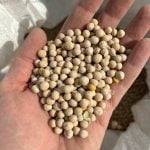Slide 2
A native dogbane beetle feeding on hemp dogbane.
Photo: Supplied
Slide 3
Spot spray applications were made to early flowering of hemp dogbane.
Photo: Supplied
Slide 4
Hemp dogbane in Roundup Ready soybean prior to the spot application of glyphosate.
Photo: Supplied
Slide 5
Hemp dogbane at 10 weeks after the application of glyphosate.
Photo: Supplied
Slide 6
Top growth control 10 weeks after the application of Distinct, both fluroxypyr and Infinity provided a similar level of control.
Photo: Supplied
Table 1
Top-growth control of hemp dogbane 10 weeks after the application of four herbicides, each mixed at the labelled rate with 1 litre of water and spot sprayed to dogbane at early flowering
Photo: Supplied
Q: I’ve been battling hemp dogbane in my soybean fields. It produces a milky juice that can stain my beans. What can I do to knock back the top growth so it won’t affect crop quality?
A: It’s good that your expectations are for top growth control of hemp dogbane (see figure 1), since it’s a perennial species with a robust root system and eradication is unlikely.
A Canadian study by Boyd and Wu (2012) observed more consistent top-growth control of dogbane when Distinct (diflufenzopyr/dicamba), Infinity (pyrasulfotole/bromoxynil), dicamba (Engenia/Xtendimax) + 2,4-D LV Ester and glyphosate were “spot sprayed” compared to broadcast applications. Other studies have indicated that the active ingredient fluroxypyr (found in Pixxaro, Trophy and Barricade) is effective at controlling top growth of dogbane (Orfanedes et al., 1993). Fortunately, there is the native dogbane beetle (see figure 2) that feeds on dogbane. However, these beneficial insects are usually not at population densities high enough to cause significant defoliation and plant death.
Read Also
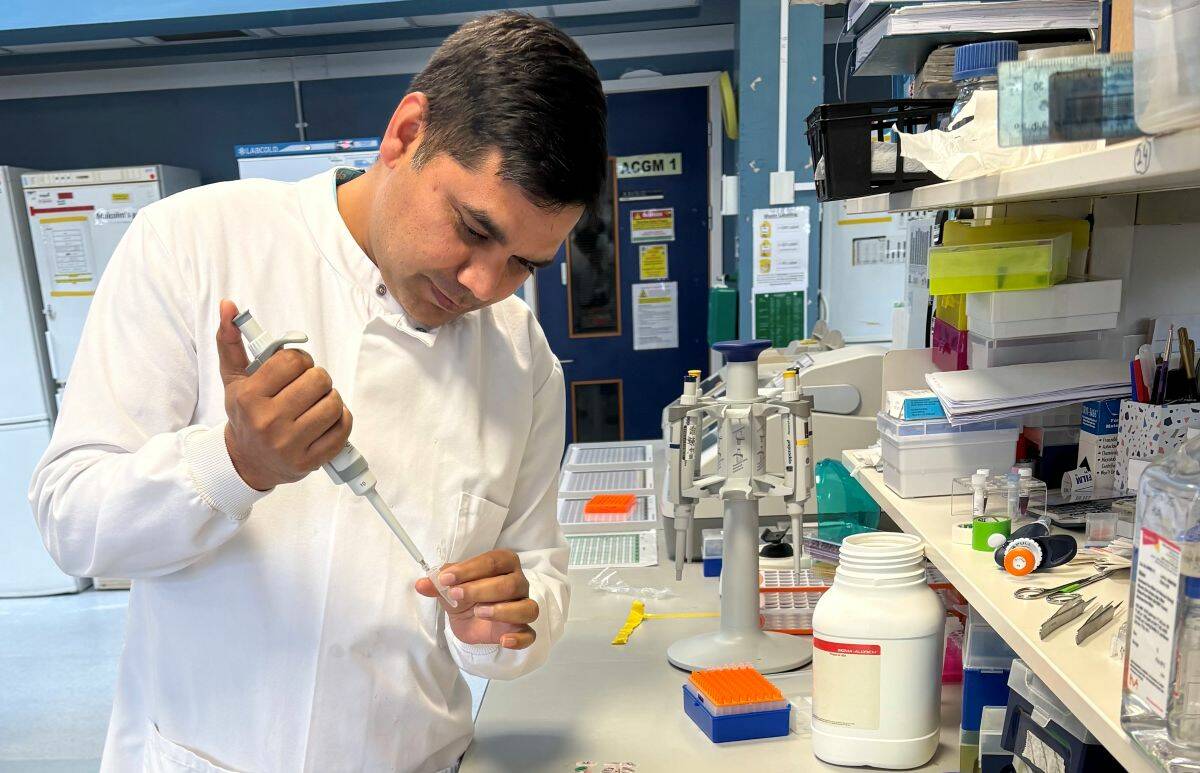
Sensing the soil: Root cell research finds ‘stress hormone’
Research into how root cells react to soil stressors could help plants better adapt to changes in their climate.
In the summer of 2017 I “spot sprayed” (see figure 3) with herbicides that have been effective in research studies. Table 1 (see final slide) provides an overview of products sprayed, mixture rates and observations on top growth.
Citations
- Orfanedes, M.S.; Wax, L.M. and R.A. Liebel. 1993. Absence of a role for absorption, translocation, and metabolism in differential sensitivity of hemp dogbane (Apocynum cannabinum) to two pyridine herbicides. Weed Science. Vol (1), pp. 1-6.
- Wu, Lin and Nathan S. Boyd. 2012. Management of Spreading Dogbane (Apocynum androsaemifolium) in Wild Blueberry Fields. Weed Technology, Vol.26(4), pp. 777-782.
Acknowledgements: I’d like to thank Luke Hartung for his assistance with the 2017 field experiment and to the farm co-operator for graciously allowing me on their property.
Have a question you want answered? Hashtag #PestPatrol on Twitter to @cowbrough or email Mike at [email protected].


